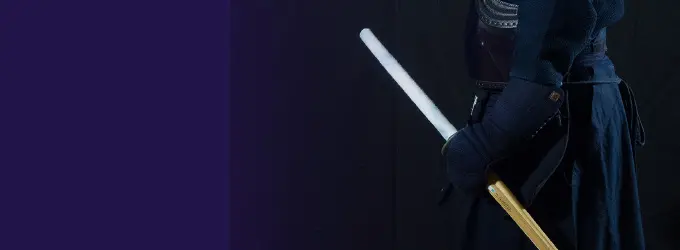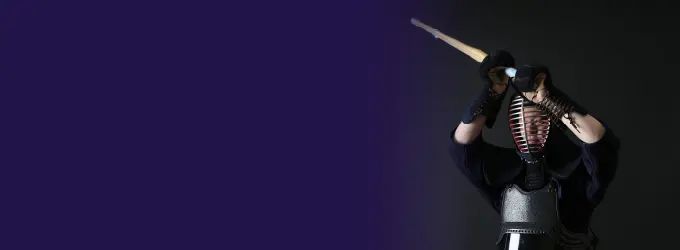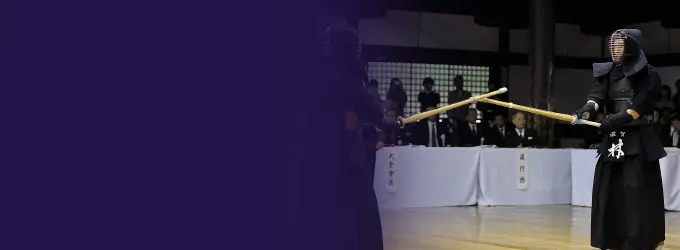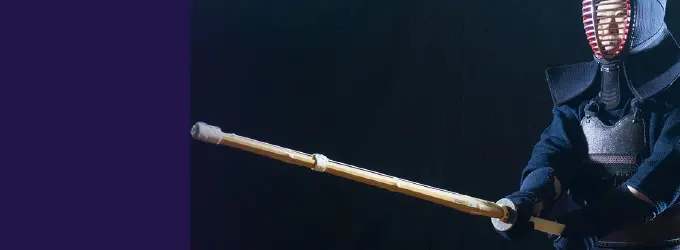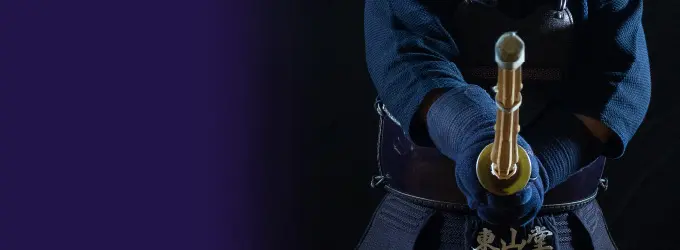Basic Knowledge That Beginners Should Know First
06 11, 2022
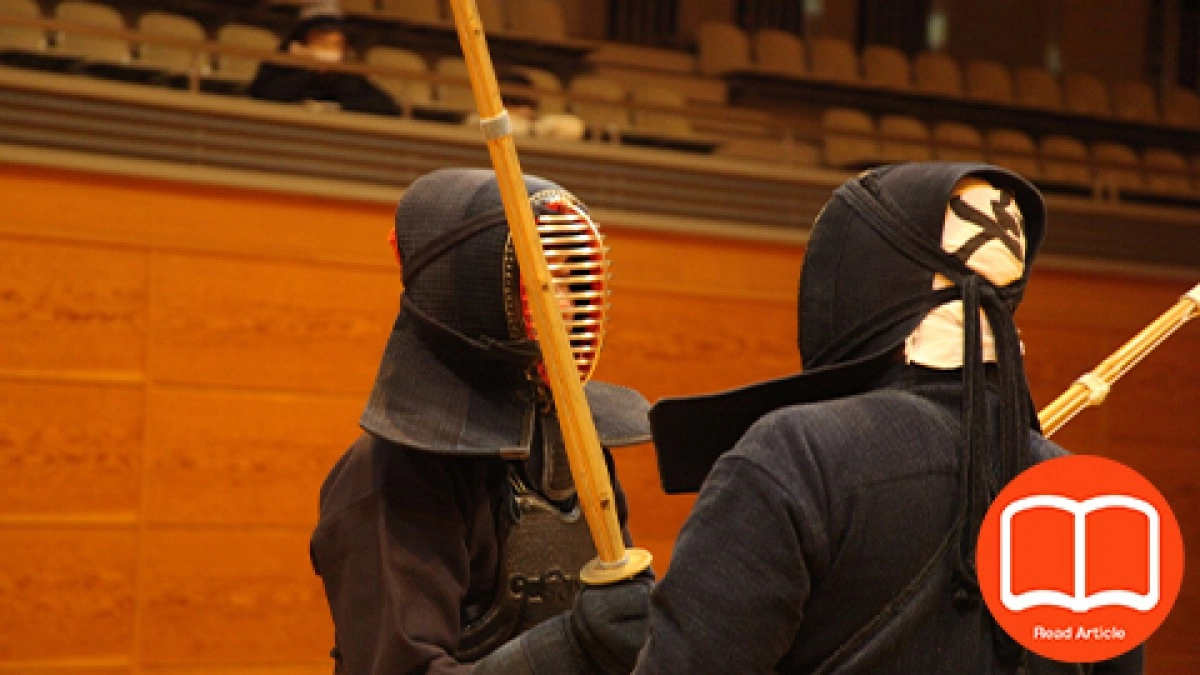
What kind of martial art is it? What are martial arts and kendo that have been passed down since a long time ago in Japan??
Table of Contents
1.What Is the Root of Kendo?
It originates from the creation of the ways and techniques of handling swords, called “kenpo” and “kenjutsu”, in order to protect themselves when warriors fight with swords.
Throughout history, as a samurai society, that is a society rules by warriors, was established, achievements in war called Ikusa led to success, and it became important to hone sword skills. In this process, various styles of kenjutsu emerged. This is the root of kendo.
Entering the Edo period, in a world of peace, kendo has become a 'living sword' used for all people, and as a method of training the mind as a human to cultivate human development, the idea that is the basis of kendo has been formed.
Due to this, the aspect as a study was strengthened, and equipment for kendo were developed as substitutes for armors, which allows us to practice without injury. There is a record of the same match was held in the late Edo period as it is now.
Shinai before the end of Edo was in a different form from that of the current ones. Until then, it was not more than a 'posture training' for using a bokuto, a wooden sward, to avoid hitting the other party or making fake hits, but the accident rate still seemed high.
2.Expansion of Kendo
“Aisu Ikou”
It is one of kenjutsu styles called Inryu, and Shin-inryu or Yagyu shin-inryu were derived from this. Since this style was used by Shogun family, Inryu is known as a school with a relatively strong political color, and was in the mainstream line.
“Iizasa Choisai”
This school has a connection with the Katori shrine of warrier god, and along with Katori, there is also a school of Kashima swords which centered on the Kashima shrine.
“Chujo Hyogo-no-kami”
The origin is the Chujo style, that is founded by Nagahide Chujo Hyogo-no-kami. It is said that this school greatly influenced on modern kendo techniques.
Many were derived from those 3 major sources above, and the schools still remained in the Meiji period. After the Meiji restoration, the samurai statuses were abolished, swords were banned, and dojo and kenjutsu declined.
However, in the Seinan War, kenjutsu was reevaluated due to the activity of the sward team. After that, dojo were reestablished around the Metropolitan Police Department, and the flow of kenjutsu culture revival began.
3.The Emergence of a Martial Arts Organization
In the early Taisho period, it seems that the word of ‘kenjutsu’ was changed to 'kendo’, explained as “Budo” based on the spirit of Japanese samurai, and it became unified. Since then, the shodan exams have conducted by the All-Japan Kendo Federation, which was founded after the war, and matches became held under the rules of the All-Japan Kendo Federation.
Besides the All-Japan Kendo Federation, there are groups like the Japan Kendo Association that promote valid rules such as hitting and throwing. In addition, the old school is called 'posture training,' and some people do it. This is commonly referred to as an old martial art, kobudo, or old style kenjutsu, koryu-kenjutsu.
In spite of some differences among them, they train their mind through matches and share the same spirit that values the tradition.
4.Some Parts Were Swept Away by the Times
Although it was once abolished after war, since GHQ recognized fencing as a sport, kendo was revived as a sport by improving swords or wearing shields used for fencing.
In 1952, with the entry into force of the San Francisco Peace Treaty, the occupation of GHQ was lifted, and the All-Japan Kendo Federation was established and revived, and the model of the current match and judgment rules were established.
Since then, over half a century, kendo started to gain enthusiasts all over the world, and has become popular with a wide range of age groups.
5.Specific Elements That form Kendo
What are the specific elements in 'doing' kendo? It is a martial arts that unexpectedly needs many things, such as things to prepare for matches and practices.
Kendo equipment
The basic set includes a full set of protectors: men, dou, kote, and tare, a uniform set: kendo gi and hakama, and a shinai. You may need several items for each situation such as a practice or a match, as well as accessories such as strings and pockets for equipment.
Manufacturers also sell those that correspond, and there are many kendo stores. You can also purchase it online, so you will be able to easily get tools. There are many kinds, so it would be fun to find one that suits you.
Practice
The practice includes ‘suburi’ swinging, ‘kirikaeshi’ continuous attack, ‘uchikomi keiko’ hitting practice, ‘kakari keiko’ attack practice, and ‘gokaku keiko’ pre-match practice. In addition, it is very important to practice 'mitori-keiko' to learn by watching other people's practice or matches.
There is also a posture training only wearing kendo gi and hakama, and using bokuto, a wooden sword. In the shodan exam of Japanese kendo type, which inherited in the first year of the Taisho period, two people apply 10 techniques including 7 matches of tachi and 3 matches of kodachi.
Match
Simply said, taking ‘ippon’ means winning.
There are individual matches and group matches. In general, a team match consists of a group of 5 players: 1st, 2nd, 3rd, 4th, and 5th competitors. The group that wins in 3 matches becomes a winner. When there is the same number of winners, the number of valid ippon may be considered to determine a winner. In addition, there are not only a 5-player system, but also a 3-player match and a 7-player match. There is also a matchmaking system in which more people compete. It is flexible.
A match is generally made up of 3 points, and the one who won in 2 points first for the kote, men, dou, and tsuki becomes the winner. When the win or loss is not determined, the match may go for overtime. Furthermore, depending on the competition, who takes the first point may be considered a winner.
System
Kendo has a single level system. There are exams called shinsa as well. The highest rank is 8 dan, and there is a rigorous screening process that does not qualify for the examination unless there is a set period of training, etc.
6.A Match with a High Spirit of ‘Morality’ Is Attractive
As indicated by the words 'start with courtesy, and end with courtesy,' that are commonly said among masters of dojo, there is a tradition where courtesy is valued more than victory. If you think about it in the sense of competing for victory or defeat under the established rules of a match, you can think of kendo as one of the sports. However, only when you have a 'mind', 'skill' and 'body', it becomes a martial art called kendo. It is necessary not only to train body, but also to train mind.
Pursuing that disciplined attitude and the “path” of budo that originated in Japan is the dedication of “keep moving forward with genuine efforts” That may be why it is a popular martial art for all the age groups and genders both at home and abroad. If you are interested, you should get started it too!

